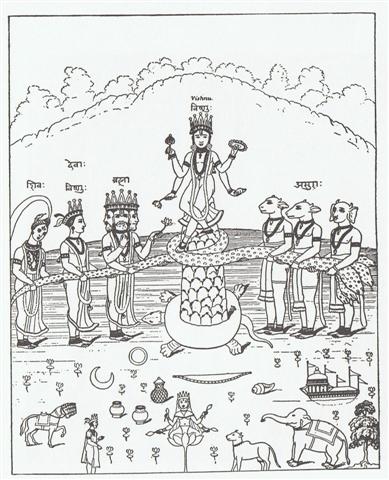Bb3.6
There is indeed much to consider. For instance is the numbering sequence of the Gorgons following
the movement of diurnal Sun
evidently in opposition to the withershins (shadow) recounting
of
the Ass Colts (following the direction
of the Moon during her month).

Basically, it appears, the
distance between the pair of triplets could represent 171 (= 9 *
19) right ascension days:
|
ASELLUS TERTIUS (3rd Ass Colt) = κ
Bootis |
ASELLUS SECUNDUS (2nd Ass Colt) =
ι
Bootis
|
ASELLUS PRIMUS (1st Ass Colt) =
θ
Bootis |
|
*214.8 |
*215.5 |
*217.8 |
|
GORGONEA SECUNDA =
π
Persei |
GORGONEA TERTIA =
ρ
Persei |
GORGONEA QUARTA =
ω
Persei |
|
*43.5 |
*45.1 |
*46.7 |
... The myth is that Perseus was sent to cut off the head of
the snaky-locked Gorgon Medusa, a rival of the Goddess
Athene, whose baleful look turned men into stone, and that
he could not accomplish the task until he had gone to the
three Graeae, 'Grey Ones',
the three old sisters of the Gorgons
who had only one eye and one tooth between them, and by
stealing eye and tooth had blackmailed them into telling him
where
the grove of the Three Nymphs
was to be found. From the Three Nymphs he then obtained
winged sandals like those of Hermes, a bag to put the
Gorgon's head into, and a helmet of invisibility. Hermes
also kindly gave him a sickle; and Athene gave him a mirror
and showed him a picture of Medusa so that he would
recognize her. He threw the tooth of the Three Grey Ones,
and some say the eye also, into Lake Triton, to break their
power, and flew on to Tartessus where the Gorgons lived in a
grove on the borders of the ocean; there he cut off the
sleeping Medusa's head with the sickle, first looking into
the mirror so that the petrifying charm should be broken,
thrust the head into his bag, and flew home pursued by other
Gorgons ...
However, from Algenib Persei (α)
to Arcturus (α Bootis) the right ascension distance was
*215 - *50 = *165 days, perhaps
corresponding to 9 * 19 - 6 (the moega
sleeping mats).
... Number 421 corresponded to 365 + 56
(= 408 + 13 = 395 + 26 = 165 + 256, etc) and here was Alcyone.
And here we will better understand the reasons for
421 glyphs on side a of the B tablet
...
*215 (Arcturus) = *221 (Toliman,
α Centauri) - *6.

 |
 |
 |
 |
 |
 |
 |
|
Bb3-19 |
Bb3-20 → Dramasa |
Bb3-21 (520) |
Bb3-22 (100) |
Bb3-23 |
Bb3-24 |
Bb3-25 (524) |
|
E tagata hakatu ki to ika e vaha
te ika |
ma te ua |
kua pua te hahine |
kua tere ko to haga |
ki te tagata haga
|
ki tona mea
ke - kua oho koia ki te haga |
mai moe koia ki te mago -
kua haga i tona mea ke |
|
Nov 3 |
4 |
5 |
6 (310) |
7 |
8 |
9 |
|
ω
Bootis (227.2),
NEKKAR (Herdsman) = β Bootis
(227.3),
σ
Librae (227.5),
π²
Oct.
(227.7),
NADLAT (Mean Little Ones) = ψ Bootis
(227.8), π Lupi (227.9) |
15h
(228.3)
ZUBEN HAKRABIM = ν Librae
(228.3), λ Lupi (228.9) |
ω
Oct. (229.3),
ι
Librae (229.6),
κ
Lupi (229.7),
ζ
Lupi (229.8) |
Al Zubānā-14b (Claws)
χ
Bootis (230.3),
PRINCEPS =
δ
Bootis
(230.6),
ZUBEN ELSCHEMALI (Northern Claw) =
β
Librae
(230.8) |
μ
Lupi,
γ
Tr. Austr.
(231.3), ο Librae (231.8) |
ο
Cor. Borealis (232.0),
δ
Lupi (232.1),
φ¹,
ν²
Lupi (232.2),
ν¹
Lupi (232.3),
ε
Lupi (232.4),
φ²
Lupi (232.5),
PHERKAD (The Dim One of the Two Calves) =
γ
Ursae Min.
(232.6),
ε
Librae (232.7),
η
Cor. Borealis (232.8),
υ
Lupi (232.9)
*191.0 = *232.4 - 41.4 |
ALKALUROPS (The Herdsman's Lance) =
μ
Bootis
(233.1),
ED ASICH (Male Hyena) =
ι
Draconis
(233.2) |
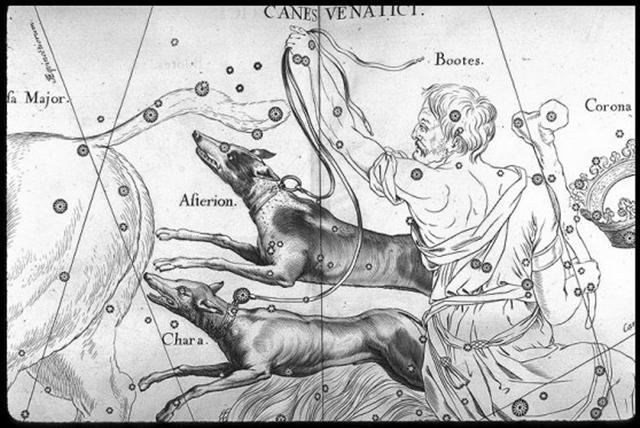 |
|
VISIBLE CLOSE TO
THE FULL MOON: |
|
MENKAR (The Nose) =
α
Ceti
(44.7) |
3h (45.7)
GORGONEA TERTIA =
ρ
Persei
(45.1),
ALGOL (The Demon) =
β
Persei
(45.9) |
ι
Persei (46.1),
MISAM (Next to the Pleiades) =
κ
Persei
(46.2),
GORGONEA QUARTA =
ω
Persei
(46.7),
BOTEIN (Pair of Bellies) =
δ
Arietis
(46.9) |
ζ Arietis (47.7) |
ZIBAL (Young Ostriches)
=
ζ
Eridani (48.0),
κ
Ceti (48.9) |
τ Arietis (49.7) |
ALGENIB PERSEI = α Persei (50.0),
ο Tauri (50.2), ξ Tauri (50.8)
GIENAH (γ Corvi) |
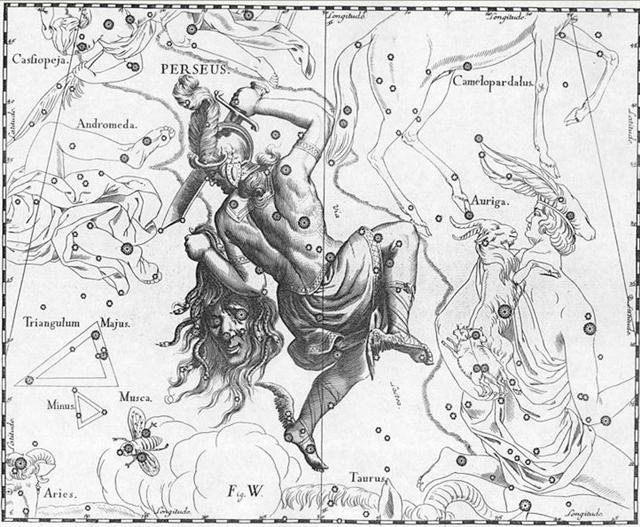 |
|
*44 =
*409 |
*410 |
*411 |
*412 |
*48 =
*413 |
→
BHARANI |
*50
|
|
May 4 |
5 (125 = 5 * 25) |
6 |
7 |
8 (2 * 64) |
9 |
10
(130) |
|
"March
24 |
25 (125 - 41) |
26 |
27 |
28 |
29 (88) |
30 |
Possibly the first Gorgon could refer to Medusa, and her
story could perhaps begin when the Full Moon was at "March 25 (3-25).
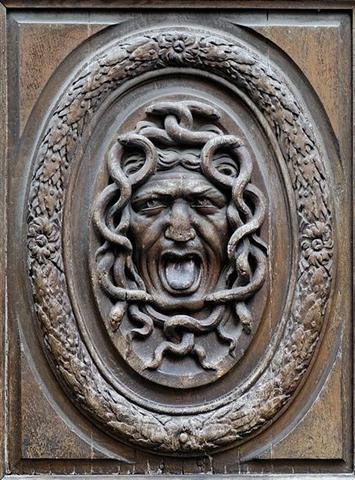
The creator of the B text seems to have assumed a withershins
(precessional) movement here, because according to Metoro Bb3-20 (→
*320, Dramasa, the South Pole star) was at ma te ua (rain) with ma te haka-ua
(making rain) arriving a week later:
 |
*7 |
 |
 |
|
ma te ua |
ma te hakaua |
hakaua |
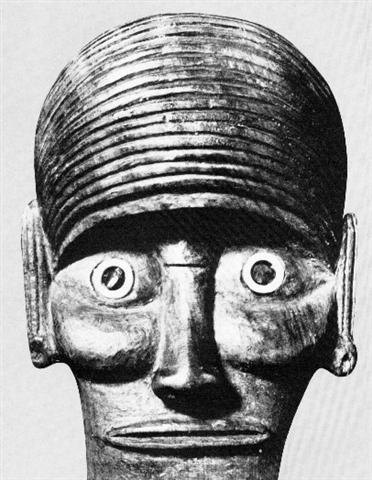
... Menkaure was allegedly a much more benevolent
Pharaoh than his predecessors. According to legends related
by Herodotus, he wrote the following: This Prince (Mycerinus)
disapproved of the conduct of his father, reopened the
temples and allowed the people, who were ground down to the
lowest point of misery, to return to their occupations and
to resume the practice of sacrifice. His justice in the
decision of causes was beyond that of all the former kings.
The Egyptians praise him in this respect more highly than
any other monarchs, declaring that he not only gave his
judgements with fairness, but also, when anyone was
dissatisfied with his sentence, made compensation to him out
of his own purse and thus pacified his anger. The Gods
however ordained that Egypt should suffer tyrannical rulers
for a hundred and fifty years according to this legend.
Herodotus goes on: An oracle reached him from the town of
Buto, which said 'six years only shalt thou live upon
this earth, and in the seventh thou shalt end thy days'.
Mycerinus, indignant, sent an angry message to the
oracle, reproaching the god with his injustice - 'My father
and uncle,' he said 'though they shut up the temples, took
no thought of the gods and destroyed multitudes of men,
nevertheless enjoyed a long life; I, who am pious, am to die
soon!' There came in reply a second message from the oracle
- 'for this very reason is thy life brought so quickly to a
close - thou hast not done as it behoved thee. Egypt was
fated to suffer affliction one hundred and fifty years - the
two kings who preceded thee upon the throne understood this
- thou hast not understood it'. Mycerinus, when this
answer reached him, perceiving that his doom was fixed, had
lamps prepared, which he lighted every day at eventime, and
feasted and enjoyed himself unceasingly both day and night,
moving about in the marsh-country and the woods, and
visiting all the places he heard were agreeable sojourns.
His wish was to prove the oracle false, by turning night
into days and so living twelve years in the space of six
...
→ 366 - 6 - 6 = 354 (=
12 * 29½). At a solstice the fire must start anew and the
necessary friction to be caused by drilling required quick back and forth
movements:
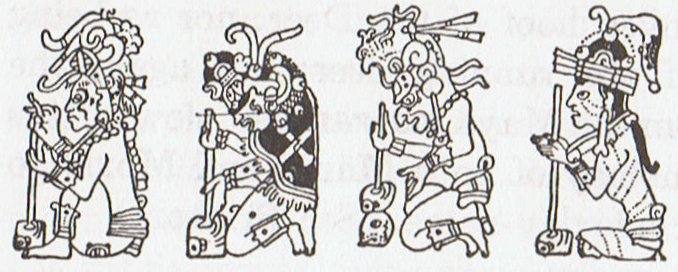
 |
 |
 |
 |
 |
 |
 |
|
Bb3-26 (525) |
Bb3-27 |
Bb3-28 |
Bb3-29 (107) |
Bb3-30 |
Bb3-31 (530) |
(18 * 29½) |
|
ko te marama kua haga
i tona mea ke |
ma te hakaua |
koia kua haga i to kava |
kua haati ia e kava |
ko te kava o Motoipua |
ko te marama kua haga
i tona mea ke |
o te kava kua haati |
|
Kava. 1. Sour; salty: vai kava,
saltwater, sea; te kava o te haíga, acrid underarm smell;
tagata kava - tagata kakara i te kava, man with smelly armpits.
2. He-kava te haha, to be thirsty. 3. To turn sour, to become
embittered, bad-tempered, exasperated (used with manava):
tagata manava kava, bad-tempered, angry man. Vanaga. Bitter,
salt; vai kava, brackish water; hakakava, to embalm;
kavakava, acid, sharp, bitter, salt, spiritous, vinegar,
poisonous, disagreeable; akavakava, to make sharp;
hakakavakava, to make acid. P Pau.: kava, disagreeable to
the taste; kavakava, acid, sharp. Mgv.: kava, to be
bitter, sour, acid, salt. Mq.: kava, bitter. Ta.: ava,
bitter, acid, salt. Kavahia: 1. Comfort, comfortable, to
feast; hakakavahia, comfort, comfortable. 2. Repulsive (of
food), disgusted; hakakavahia, repulsion. Kavakava,
rib; moi kavakava, a house god G. P Mgv.: vakavaka,
the breast. Mq.: vakavaka, vaávaá, rib. Ma.:
wakawaka, parallel ridges. We shall need all the available
material in order to determine the germ sense of this word. Sa.:
va'ava'a, the breast-bone of a bird; fa'ava'a, the frame
as of a slate. To.: vakavaka, the side. Fu.: vakavaka,
the side below the armpit. Ha.: hoowaa, to make furrows. In
all these we may see the idea of ridge or depression, or of both, as
primal (Rapanui, Samoa, Marquesas, Maori, Hawaii), and as secondary
the part of the body where such appearances is common (Mangareva,
Tonga, Futuna). Churchill. Mgv.: kava, the pepper plant and
the drink made therefrom. Ta.: ava, id. Mq.: kava, id.
Sa.: 'ava, id. Ma.: kawa, a pepper. Kavakava, a
fish. Sa.: 'ava'ava, id. Kavapui, a tree. Ta.:
avapuhi, a fragrant plant. Mq.: kavapui, wild ginger.
Sa.: 'avapui, id. Ha.: awapuhi, id. Churchill. Mq.:
ava, a small fish of sweet water. Sa.. 'ava'ava, a small
fish. Ha.: awa, a fish. Kakava, burnt. Sa.: 'a'ava,
very hot. Churchill.
 |
|
Nov 10 (314) |
11 |
12 |
13 |
14 |
15 |
16 (320) |
|
NUSAKAN (Pauper's Bowl) = β Cor. Bor.
(234.0), κ¹ Apodis (234.3), ν Bootis (234.7), ζ Librae
(234.9) |
θ Cor. Borealis (235.3), γ Lupi (235.6),
GEMMA =
α Cor. Bor.,
ZUBEN ELAKRAB = γ Librae, QIN = δ Serpentis, ε Tr.
Austr.
(235.7), μ Cor. Borealis (235.8), υ Librae (235.9)
SIRRAH (α Andromedae) |
φ Bootis (236.2), ω Lupi, τ Librae (236.3), ψ¹ Lupi
(236.7), ζ Cor. Borealis (236.9) |
κ
Librae (237.2),
ι
Serpentis (237.4),
ψ²
Lupi,
ρ
Oct.
(237.5), γ Cor. Borealis, η Librae (237.7), COR
SERPENTIS = α Serpentis
(237.9)
*196.0 = *237.4 - *41.4 |
π
Cor. Borealis,
UNUK ELHAIA (Necks of the Serpents) =
λ
Serpentis
(238.1),
CHOW =
β
Serpentis
(238.6) |
κ
Serpentis (239.3),
δ
Cor. Borealis,
TIĀNRŪ =
μ
Serpentis
(239.5),
χ
Lupi, (239.6),
ω
Serpentis (239.7),
BA (= Pa) =
ε
Serpentis,
χ
Herculis (239.8).
κ
Cor.
Borealis, ρ Serpentis (239.9) |
λ
Librae (240.0),
β
Tr. Austr. (240.3),
κ
Tr. Austr. (240.4),
ρ
Scorpii (240.8)
*199.0 = *240.4 - *41.4 |
|
... In other words,
the ancient Druidic religion based on the oak-cult will
be swept away by Christianity and the door - the god
Llyr - will languish forgotten in the Castle of
Arianrhod, the Corona Borealis. This helps us to
understand the relationship at Rome of Janus and the
White Goddess Cardea who is ... the Goddess of Hinges
who came to Rome from Alba Longa. She was the hinge on
which the year swung - the ancient Latin, not the
Etruscan year - and her importance as such is recorded
in the Latin adjective cardinalis - as we say in
English 'of cardinal importance - which was also applied
to the four main winds; for winds were considered as
under the sole direction of the Great Goddess until
Classical times ... |
|
VISIBLE CLOSE TO THE
FULL MOON: |
|
σ Persei (51.6) |
No star listed (52) |
ψ
Persei (53.1)
ACRUX (α
CRUCIS) |
δ
Persei (54.7) |
Al Thurayya-27 (Many Little Ones) /
Krittikā-3 (Nurses of Kārttikeya) /
TAU-ONO (Six Stones)
ATIKS =
ο
Persei, RANA (Frog) =
δ
Eridani
(55.1),
CELAENO (16 Tauri), ELECTRA (17), TAYGETA (19),
ν
Persei (55.3), MAIA (20), ASTEROPE (21), MEROPE (23)
(55.6) |
Hairy
Head-18 (Cockerel) /
Temennu-3
(Foundation Stone)
ALCYONE
(56.1),
PLEIONE (28 Tauri), ATLAS (27 Tauri)
(56.3) |
MENKHIB (Next to the Pleiades =
ζ
Persei
(57.6)
PORRIMA (γ Virginis) |
|
*416 |
*417 |
*418 |
*419 |
*55 = *408
+ *12 |
*56 =
*421 |
*422 |
|
May 11 |
12 (2 *
66) |
13 |
14 |
15 (365
+ 135) |
16 (2 *
68) |
17
(137) |
|
"March
31 (90) |
"April
1 |
2 (133
- 41) |
3 |
4 |
5 |
6 (96) |
We can perceive that the ua illustration in Bb3-20 is oriented
in the
opposite direction compared to that ua which is preceding the Pleiades in the C text:
The headless figure in Bb3-19 might allude to Medusa after her
head had been put into the bag of Perseus. Which meant at the
nose (Menkar) of Cetus just in front of his open mouth (vaha
te ika).

|
 |
*61 |
 |
 |
|
FUM
AL SAMAKAH (*348) |
MENKAR |
ALGOL (*45) |
|
March 5
(428 = 63) |
May 4 (124) |
5-25 (5
* 5 * 5) |
|
DEC 30 (*284) |
MARCH 1 (124 - 64) |
2 (61) |
... The leap day was introduced
as part of the Julian reform. The day following
the Terminalia (February 23) was doubled,
forming the 'bis sextum - literally
'double sixth', since February 24 was 'the sixth
day before the Kalends of March' using Roman
inclusive counting (March 1 was the 'first day')
...
|

|













